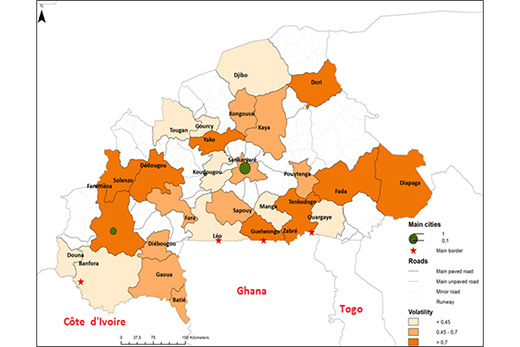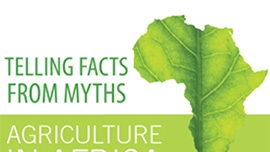SUMMARY
Burkina Faso is landlocked and dependent on agriculture. Its limited transportation infrastructure makes transport costs high and hinders market participation, especially for rural farmers. Furthermore, urban traders are discouraged from purchasing food items directly from rural farmers. Supply and demand forces may also increase price volatility. However, few studies have explored this possibility.
This study examines the effect of market remoteness on maize price volatility in Burkina Faso. Maize is widely consumed throughout the country and is the largest source of income for farmers, after cotton. Because price volatility may hinder investment in agricultural production, understanding its cause is important for food security and rural development.
The Analysis
The study develops a price formation model that relates price volatility to transport costs and assesses its ability to explain differences in spatial volatility. It explores monthly maize prices across 28 markets over 2004–13. The model assumes that market remoteness implies higher transport costs, which fuel price volatility.
- An autoregressive conditional heteroskedasticity (ARCH) model is used to investigate the determinants of spatial price volatility.
- Spatial price volatility across markets is explored by analyzing time distance to major cities and maize border-crossing points and by looking at whether the market is in deficit or surplus production area.
- The robustness of results is tested by using alternative measures of market remoteness, by conducting the same analysis with a nominal price series, and by generalizing the ARCH model.
Results
Markets close to major cities, where roads are better, display less volatile price series. Also markets located in maize-surplus regions and those close to maize border-crossing points have more volatile prices than maize-deficit and non-bordering markets.

